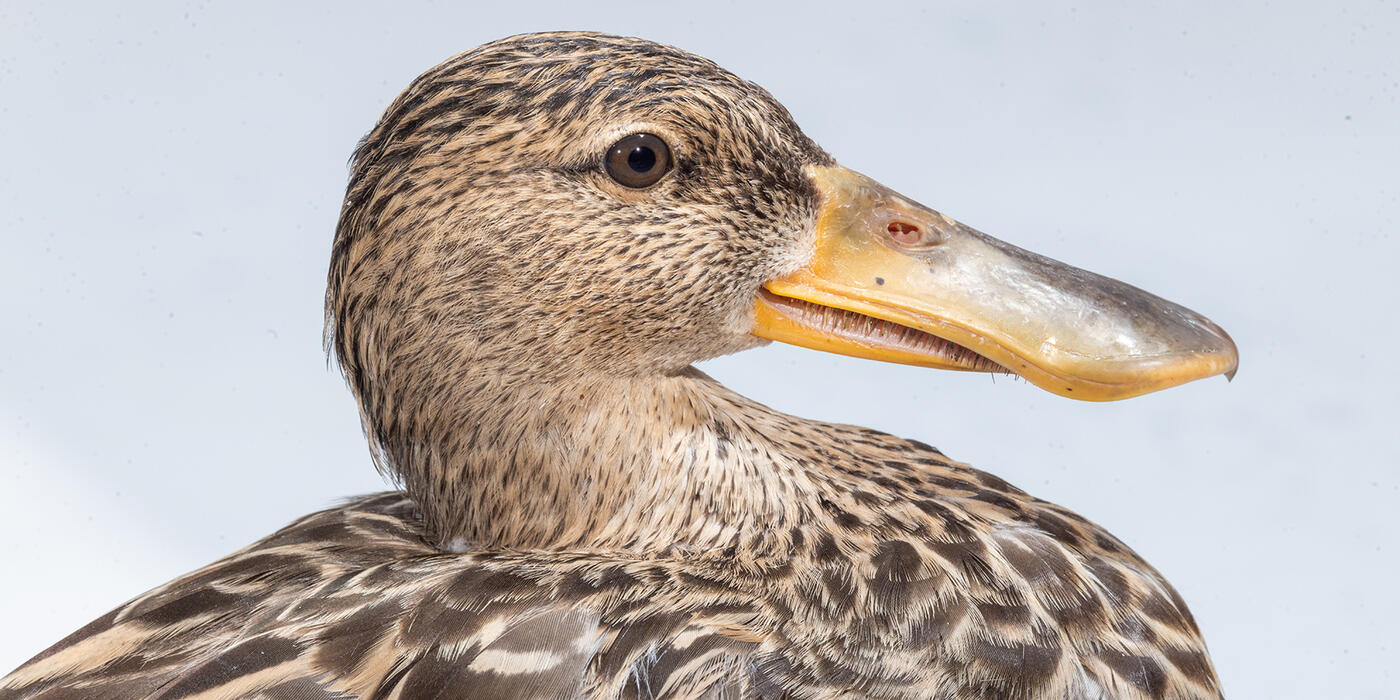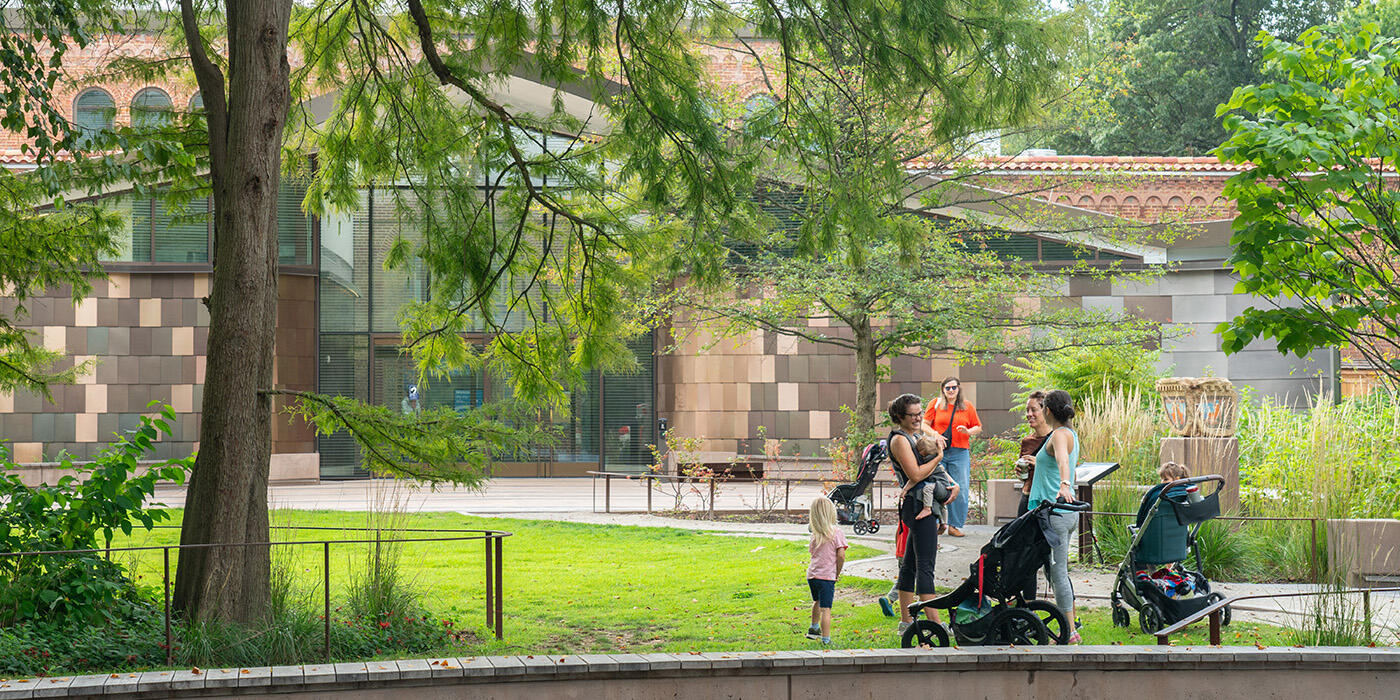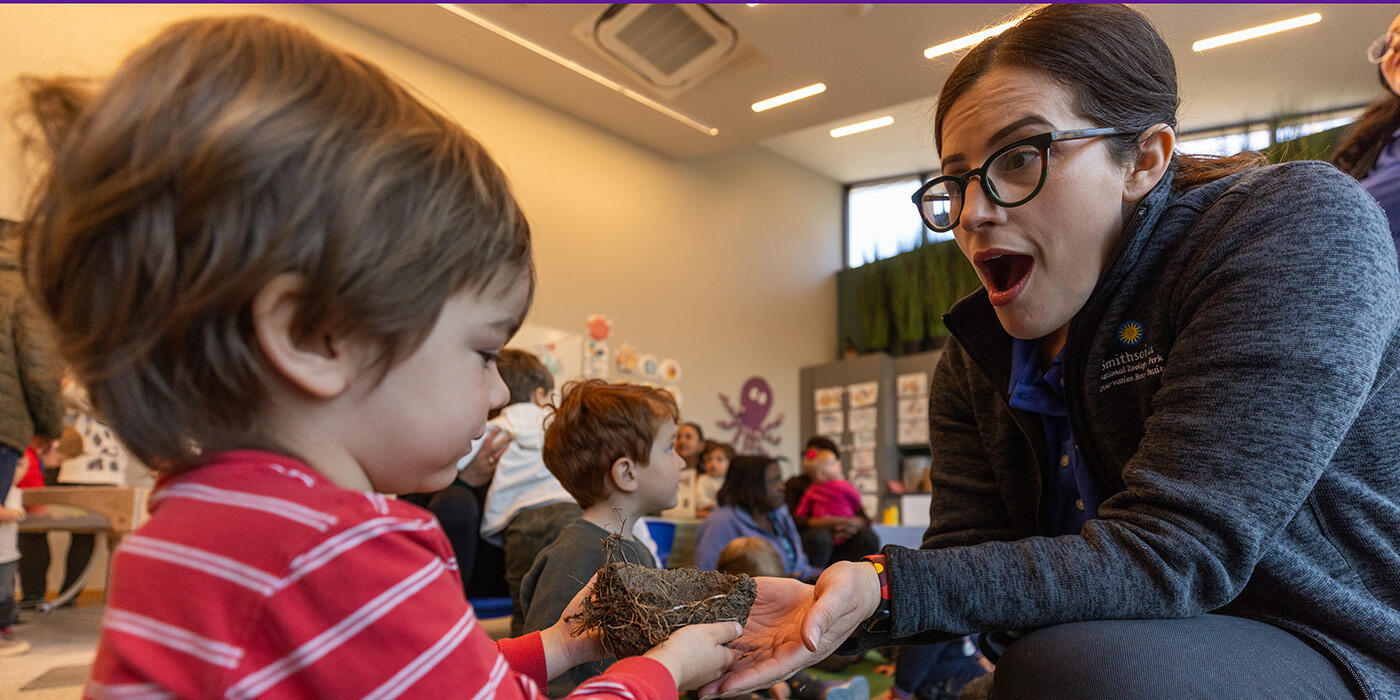How Do You Care for Elderly Swamp Sparrows?
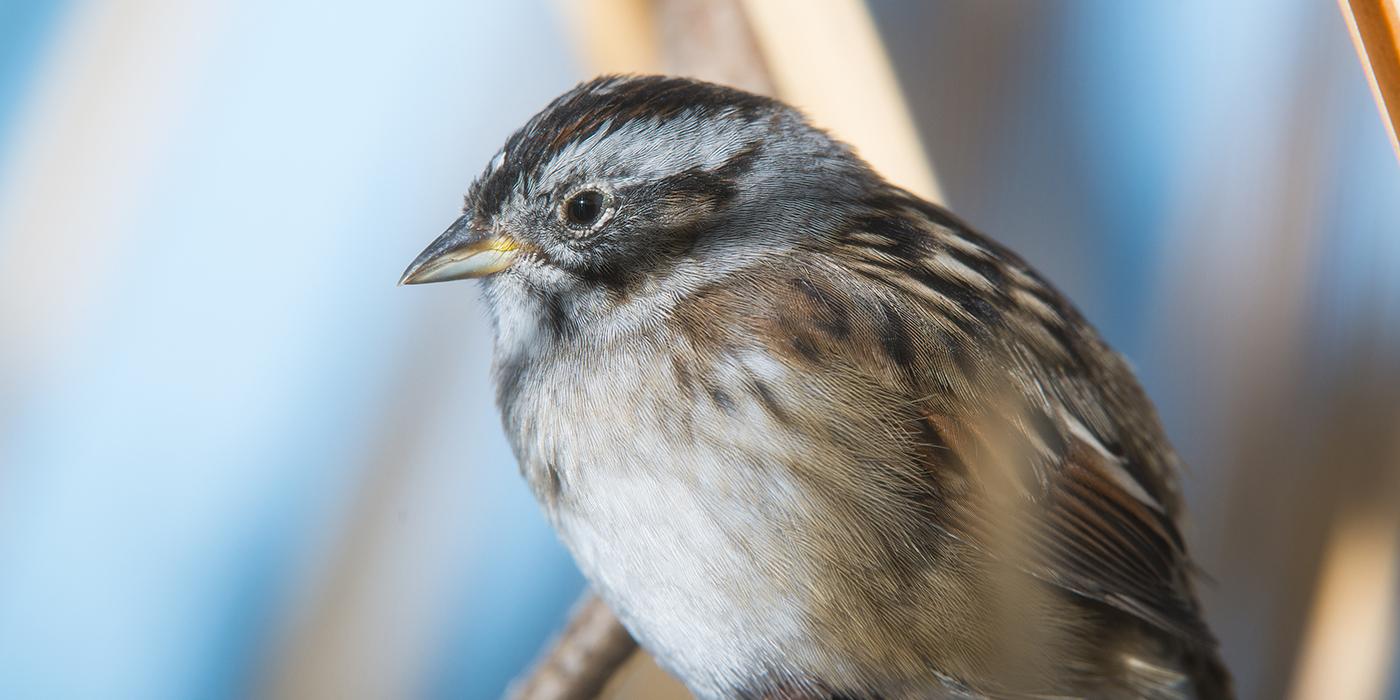
It all started with swamp sparrows.
The year was 2007, and our colleagues at the Smithsonian Migratory Bird Center had just concluded a study that involved 35 swamp sparrow chicks. Since they could not be released to the wild, the Bird House team took the young birds under our wing.
In doing so, the Smithsonian’s National Zoo became the first institution to keep swamp sparrows in human care and manage them as a collection. This flock was among the first native songbirds that we worked with, and early lessons learned helped inform our current best practices for acclimating songbirds into human care.
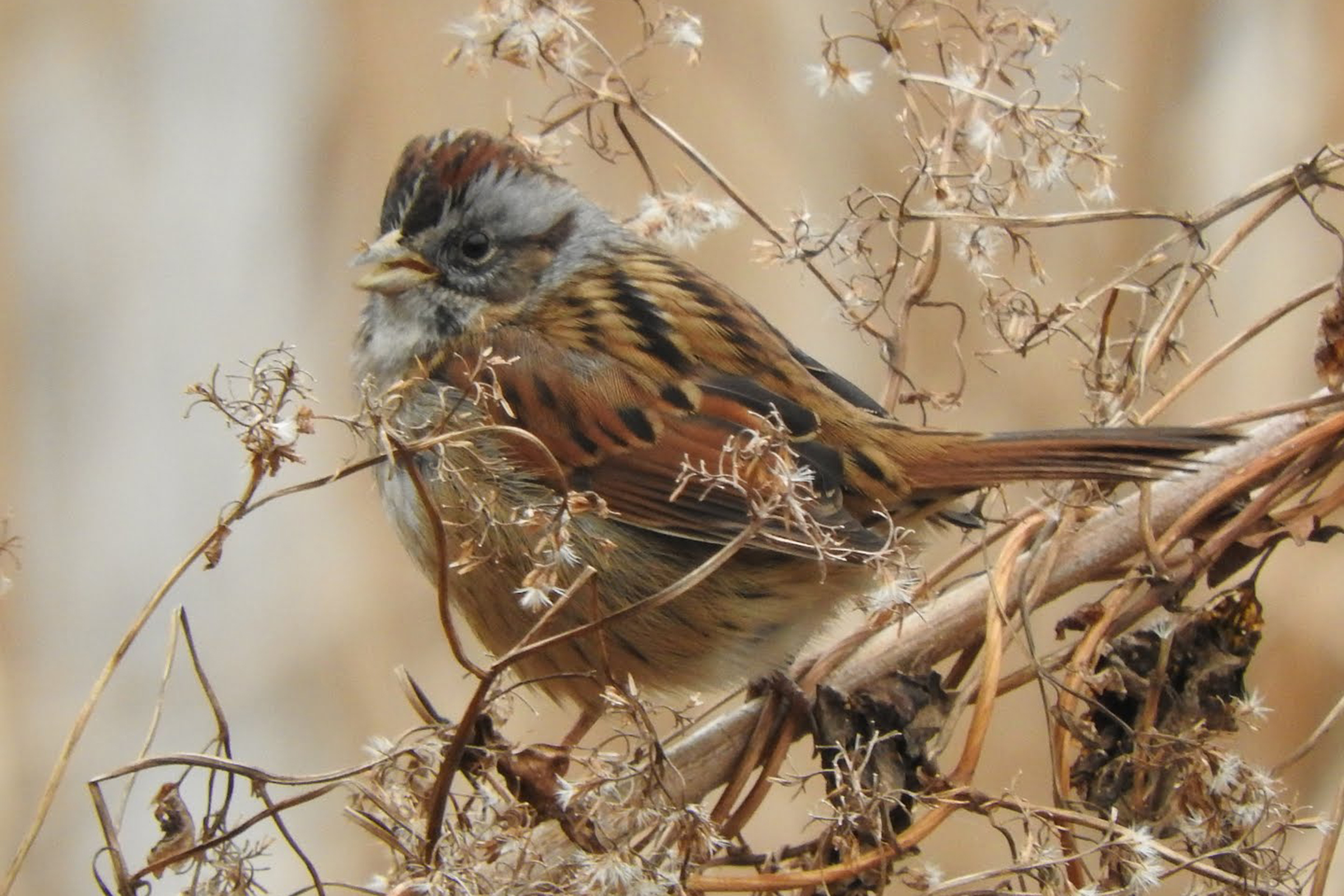
Typically, swamp sparrows only live five to seven years in the wild. Over the years, our flock of 35 swamp sparrows shrank through natural attrition. The numbers declined until we had just two left—a male and female—who, at nearly 16 years old, are still in our care today. The fact that they continue to thrive is a testament to the dedication of our team, and what these birds have taught us about animal husbandry.
Our male and female swamp sparrows have distinct personalities, and the keepers who work closely with this pair liken them to an old married couple. They squabble and jockey for food. They take frequent naps. And, as with people, they have started to “gray” in their older years. Our elderly swamp sparrows have earned the right to be a bit curmudgeonly, but that’s only one aspect of their personality. They are also inquisitive, athletic and incredibly charming.
At this stage in their lives, our swamp sparrow pair are well past their reproductive years. It is just as well since they belong to different subspecies and would not be candidates for breeding anyway. That said, they are wonderful companions for each other, and their bold and charismatic natures make them excellent ambassadors for their species. Having them as a part of the Bird House collection provides our team an opportunity to champion their unique charms.
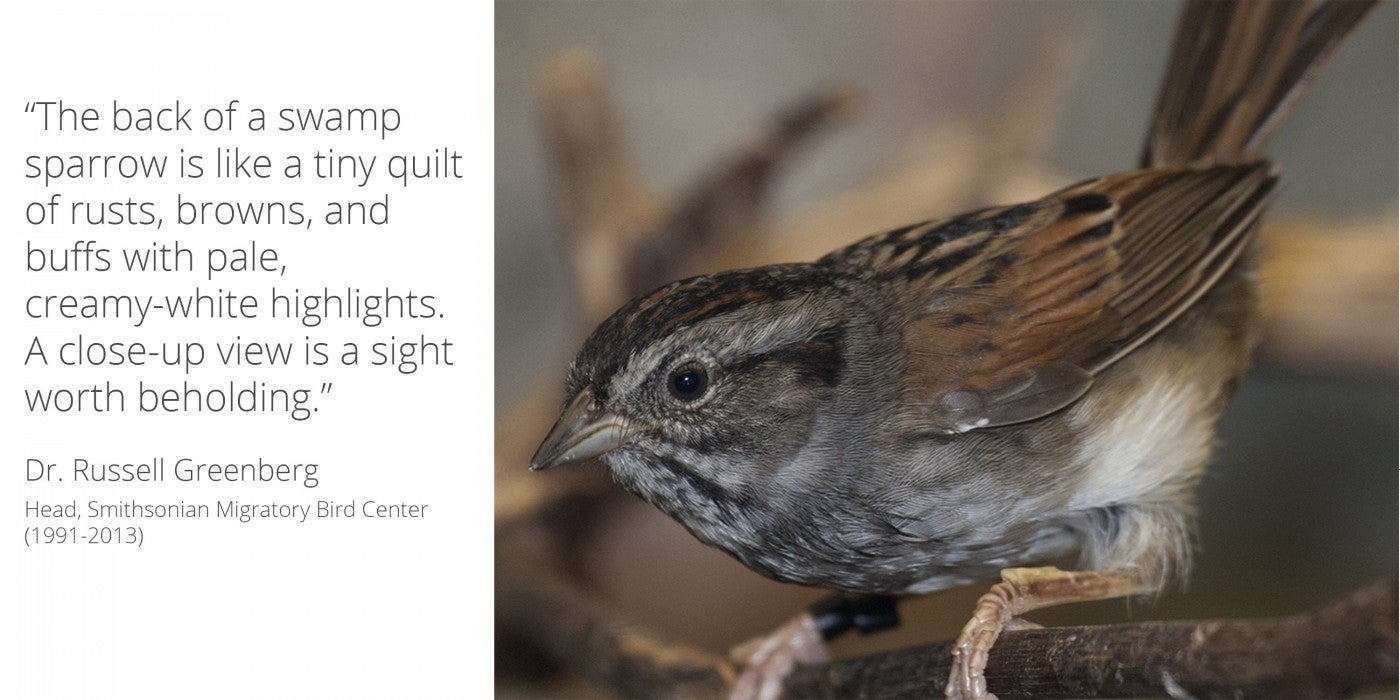
Our swamp sparrows also offer a great model for how to care for aging songbirds down the road. Due to our male swamp sparrow’s advanced age, he was experiencing joint stiffness and soreness. Luckily, he showed an interest in interacting with his keepers.
As part of our positive reinforcement training program, we taught him to “station”—come to a designated spot—so we can feed him tasty waxworms with his arthritis medication. It only took two days for him to learn the routine. He eagerly participates in this interaction and often waits for his keepers to receive his “treat” (and medicine) twice a day.
To keep our swamp sparrows active, keepers often scatter-feed them crickets, which encourages the birds’ natural hunting and foraging behaviors. For an added challenge, keepers hide insects among a pile of leaves, and the swamp sparrows have to dig through them to find their meal. Unlike other sparrow species that hop along the ground, swamp sparrows have a tendency to scurry as they forage. It is an endearing and somewhat unexpected sight to behold!
True to their name, swamp sparrows enjoy being in and around water. We offer all of our songbirds regular mist-baths, but our swamp sparrows enjoy dousing themselves in their water bowls. To simulate the water along a marshy bank, we also provide shallow trays of water for them to wade through.
Swamp sparrows are very vocal. Males sing to defend their territories against would-be rivals and to woo potential female mates. Females select which male they want to breed with, and research suggests that females prefer faster songs with a simple trill. Looks are very important as well; females tend to go for males with distinct head features, such as rust-colored crown feathers, black forehead patches and larger bills.
In the wild, nests are comprised of a rough exterior made of dried grasses, plant stalks, twigs, leaves or rootlets, with a softer interior made of finer grasses, hair, plant fibers or down. To mimic these materials at the Zoo, we provide our sparrows with pine needles, paper strips, twigs, coconut fiber, cotton, alpaca hair, dried grasses and leaves. Females select the nest site; usually, they are located just above ground or water in dense grasses, cattails or shrubs, and are packed into the selected vegetation for support. Males might bring materials to the build site, but only females are responsible for the construction.
Once the female lays eggs, she incubates them for up to 14 days. After the chicks have hatched, both parents make frequent feeding trips. Only females brood the nestlings, who fledge (leave the nest) after about 10 days. Often, mothers will continue to care for chicks up to 15 days after they fledge—even if she is building a nest for a second brood! Around one month old, the chicks are self-sufficient and go off on their own.
Our team has learned a great deal in taking care of swamp sparrows for nearly 16 years. The legacy of our male and female swamp sparrow—and the 33 others who came into our care—has helped our team write the book on the husbandry, diets, environmental enrichment and other factors that migratory songbirds need in order to survive, thrive and reproduce.
Swamp sparrows are a species of least concern, according to the International Union for Conservation of Nature, but wild populations still face threats, such as the draining of wetlands and rising sea levels. The long-term prospects of this sparrow will largely depend on wetland conservation. We are studying these common birds while they are still common—before it is too late to save them from extinction.
Although our swamp sparrows will not be on exhibit when the Bird House reopens in late summer 2022, we look forward to introducing our visitors to other charismatic sparrow species, including grasshopper sparrows, white-throated sparrows and song sparrows. We hope that by meeting a few of the 132 species of New World sparrows, our visitors will come to appreciate how truly special and remarkable these little migratory songbirds are.
This story appears in the December 2021 issue of National Zoo News. Learn how Smithsonian Conservation Biology Institute keepers raise loggerhead shrikes (a.k.a. butcher birds), and see how enrichment can help migratory songbirds and shorebirds feel at home in a Zoo habitat.Related Species:
